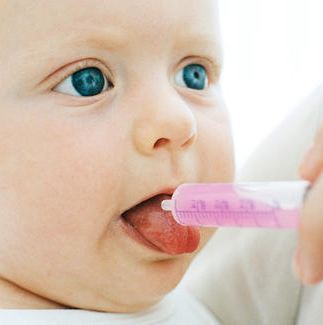Early Life Exposure to Skim Milk, Vitamin D Drops, Antibiotics & Ear Infections Associated with Celiac Disease
 “This study is the first to find an association between skim milk consumption and CD and vitamin D drop use for greater than 3 months and CD. It also adds to evidence that early life exposure to antibiotics and early life infection, specifically ear infection, are associated with CD.”
“This study is the first to find an association between skim milk consumption and CD and vitamin D drop use for greater than 3 months and CD. It also adds to evidence that early life exposure to antibiotics and early life infection, specifically ear infection, are associated with CD.”
- Seth Scott Bittker, Kathleen Roberta Bell, Dove Press 1
Summary
In order to determine whether certain factors are associated with CD, we conducted an Internet-based survey among parents whose children have CD and parents whose children do not have CD. Based on the responses from this survey, we find that skim milk consumption between ages two and three and vitamin D drop exposure for greater than three months are associated with CD. These first two results are novel. In addition, we find associations between antibiotic use before age two and CD and ear infection before age two and CD. Variants of these latter two results appear in the existing literature. 2
CLICK HERE to listen to the accompanying video of this case-controlled epidemiological study.
Background: Celiac disease (CD) prevalence has increased significantly in recent decades in some developed countries. Yet the environmental factors in the existing literature do not appear to provide a satisfactory explanation for this increase.
Objective: To determine whether nine variables are associated with CD in children. These variables are as follows:
- incidence of ear infection before 2 years old
- courses of antibiotics before 2 years old
- duration of breastfeeding
- vitamin D drop exposure in infancy
- vitamin D supplement exposure between 2–3 years old
- age at gluten introduction into the diet
- fat content of cow’s milk consumed between 2–3 years old
- quantity of cow’s milk consumed between 2–3 years old
- type of water consumed at 2 years old
Methods: An Internet-based survey was conducted among parents living in the US with at least one biological child between 3 and 12 years old. Potential participants were informed about the survey through social media, websites, electronic newsletters, and advertisements.
Results: After exclusions, there remained 332 responses associated with children with CD (cases), and 241 responses associated with children who do not have CD (controls). In this data set, the following were all found to be associated with CD in children:
- skim milk as the primary form of liquid cow’s milk consumed between 2–3 years old (adjusted odds ratio [aOR]=3.556, CI=1.430–10.22, P=0.010)
- vitamin D drops administered for more than 3 months (aOR=1.749, CI=1.079–2.872, P=0.025)
- courses of antibiotics (aOR=1.133, CI=1.037–1.244, P=0.007)
- incidence of ear infection (aOR=1.183, CI=1.041–1.348, P=0.010)
Conclusions: This study is the first to find an association between skim milk consumption and CD and vitamin D drop use for greater than 3 months and CD. It also adds to evidence that early life exposure to antibiotics and early life infection, specifically ear infection, are associated with CD.













